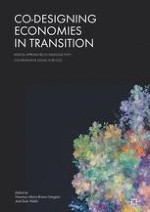2018 | OriginalPaper | Buchkapitel
15. One Bright Byte: Dōgen and the Re-embodiment of Digital Technologies
verfasst von : David Casacuberta
Erschienen in: Co-Designing Economies in Transition
Aktivieren Sie unsere intelligente Suche, um passende Fachinhalte oder Patente zu finden.
Wählen Sie Textabschnitte aus um mit Künstlicher Intelligenz passenden Patente zu finden. powered by
Markieren Sie Textabschnitte, um KI-gestützt weitere passende Inhalte zu finden. powered by
